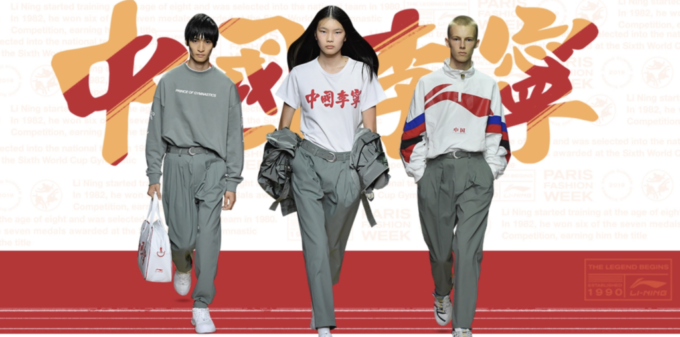Anta has also been able to capitalize on the growing ‘Guochao’ trend by recognizing the increasing preference of Chinese consumers for home-grown brands. The company has taken the Nike playbook and expanded its retail presence with a large number of stores – including highly diversified experience stores, similar to Nike – across China, and a strong focus on digital channels. This has made its products more accessible to consumers and contributed to its revenue growth. In many ways, Anta is a fast follower and not to be underestimated in the future.
Li Ning targets Gen Z and proves its marketing agility
Li Ning is named after the legendary Chinese Olympian and is a huge commercial success by an athlete-led company that has certainly benefited from the ‘Guochao’ trend. Initially, this preference for Chinese brands was not immediately obvious, as this sentiment was appealing to a new target consumer group. The company’s strategic marketing efforts, including its participation as a Chinese brand in international events like New York Fashion Week, have helped to re-position Li Ning as a trendy and nationalistic label. This has attracted younger, more fashion-conscious Gen-Z consumers.
While Li Ning has been expanding its omnichannel strategy, it is far from Nike and Anta in terms of implementation. Li Ning seized opportunities arising from national events and controversies to align its brand with local consumer sentiments. While this led to a temporary spike in popularity and pricing, it also highlighted the brand’s agility in responding to market dynamics.
Guochao, excellent products, and competitive prices create fertile future for Chinese brands
Sensitivity to local consumers has never been as important as it is now. While Nike has deep roots in China, leveraging a true omnichannel strategy may not keep the company afloat forever. Local sentiments may increasingly favor local brands, which in turn have been investing in innovation and are increasingly leveraging marketing and branding to get close to consumers.
The Chinese consumer has also become more sophisticated, rationally assessing quality and cost; Li Ning and Anta meet this demand by providing excellent products at competitive prices.







